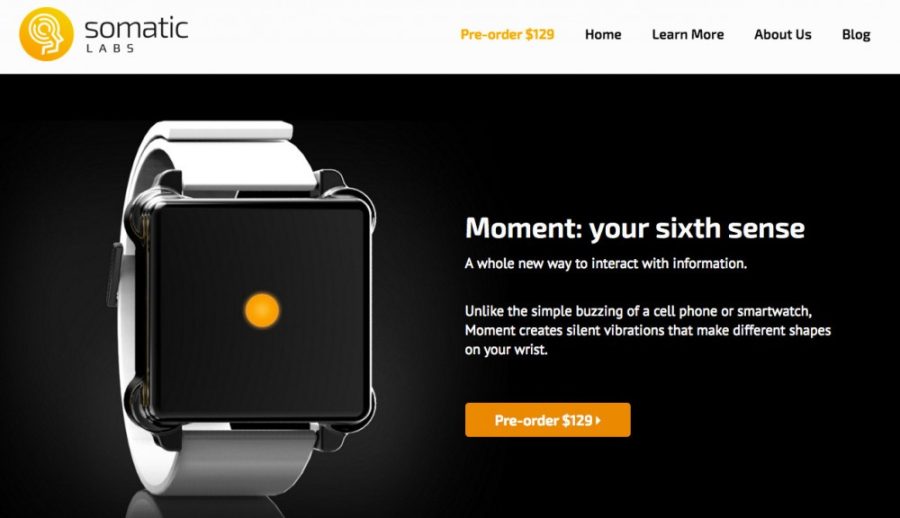People spend a lot of time staring at screens, whether they are phones, laptops or televisions. That’s a lot of time only using one sense: sight.
Haptic technology aims to incorporate the sense of touch into technology.
“Imagine me tracing a circle on your wrist with the tip of my finger at a fixed rate or a line that goes forward and bends to the left, like an ‘L’ rotated at 180 degrees,” said Jake Rockland, a computer engineering junior. “These physical, tactile cues can intuitively convey information like the passing of time or upcoming turns during GPS navigation. … It’s information that we’re used to interacting with, just through our sense of touch rather than visual cues.”
This is haptic feedback, or the conveyance of information through “precise vibrations” of touch, according to Rockland.
He is part of the team at Somatic Labs, a fairly new company focused on incorporating haptic feedback into everyday life. The company was founded by Shantanu Bala, an Arizona State University alumnus who has worked with haptic technology since 2009.
“I started working at the Center for Cognitive Ubiquitous Computing at [ASU] right after my sophomore year of high school,” Bala said. “I first worked on VibroGlove, an assistive device for conveying facial expressions to individuals with a visual disability.”
Bala was awarded the Thiel Fellowship in 2014 to continue his work, when he began to develop Moment, the first haptic product from Somatic Labs.
Bala works at Somatic Labs with Rockland and Ajay Karpur, an ASU electrical engineering senior.
Moment, which will first ship to customers in fall 2016, is a form of haptic technology designed to be worn on the wrist. It turns the movements of real-time data, like GPS directions, into “vibro-tactile” sensations that you feel on your skin.
“Right now, I think our biggest challenge as we position ourselves to scale for a full release [of Moment] is figuring out how to best convey the value that our product offers to our potential users,” Rockland said. “We’ve found that some people don’t realize exactly how our product can ‘augment human perception’ as quickly as we would like them to. However, this is something we are always actively working on.”
While Somatic Labs is currently focused on customer outreach and education, as well as collecting feedback on the website and product in preparation for a crowdfunding campaign, it is also looking ahead to future applications of their technology.
“As we grow, Somatic Labs can make more wearable electronic devices that interact with our sense of touch,” Bala said. “We’re envisioning a series of devices that become further integrated into the things we wear on a regular basis. We’re starting with a wristband, but we eventually want to make assistive and rehabilitative technologies embedded in clothing and shoes.”
Technology like Moment provides a way for us to break into other senses that we have yet to explore. Whether that comes in the form of a haptic wristband or new therapy techniques, Somatic Labs provides an interesting exploration into these possibilities.
“I imagine turning physical therapy into an interactive game,” Bala said. “Or delivering alerts to people operating heavy machinery to improve their situational awareness.”
Follow Maddie Pickens on Twitter.









